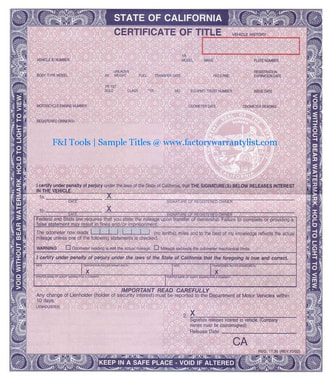The Power of Attorney and Car Title Transfer: A Comprehensive Guide
The Power of Attorney and Car Title Transfer: A Comprehensive Guide
power of attorney car title transfer. Transferring the title of a car can be a complicated and time-consuming process. However, with the help of a power of attorney, the task can become more manageable. In this article, we will discuss what a power of attorney is, how it relates to car title transfer and the steps you need to take to complete the process.
What is a Power of Attorney?
A power of attorney is a legal document that grants someone else the authority to act on your behalf. The person granting the authority is called the principal, while the person receiving the authority is called the agent or attorney-in-fact. The power of attorney can grant broad authority, including the ability to manage financial affairs, sign contracts, and file tax returns, or it can be limited to specific tasks, such as transferring the title of a car.
When is a Power of Attorney Necessary for Car Title Transfer?
There are several situations where a power of attorney may be necessary for car title transfer. For example, if the owner of the car is unable to appear in person to transfer the title due to illness, injury, or travel, a power of attorney can be used to designate someone else to complete the process. Additionally, if the owner of the car is deceased, a power of attorney can be used to transfer the title to the beneficiary or heir.
How to Create a Power of Attorney for Car Title Transfer
Creating a power of attorney for car title transfer is a relatively straightforward process.
Here are the steps you need to take:
Determine the scope of authority: The first step is to determine the scope of authority you want to grant the agent. If you want the agent to have broad authority to manage all aspects of the car title transfer process, you can use a general power of attorney. If you want to limit the agent's authority to specific tasks, such as signing the title transfer documents, you can use a limited power of attorney.
Choose the agent: The next step is to choose the person you want to act as your agent. This can be anyone you trust, such as a family member, friend, or attorney.
Draft the power of attorney: Once you have determined the scope of authority and chosen the agent, you can draft the power of attorney. It is essential to include specific language that grants the agent the authority to transfer the car title. You should also include the name and description of the car, the vehicle identification number (VIN), and the name of the person who will be receiving the title.
Sign the power of attorney: After the power of attorney has been drafted, you and the agent must sign it in front of a notary public. This will ensure that the document is legally binding.
Provide the power of attorney to the agent: Once the power of attorney has been signed and notarized, you should provide a copy to the agent. The agent will need to present the power of attorney to the Department of Motor Vehicles (DMV) or other relevant authorities when transferring the car title.
Car Title Transfer with a Power of Attorney
Once you have created a power of attorney for car title transfer, the agent can use it to transfer the title on your behalf.
Here are the steps the agent needs to take:
Gather the necessary documents: The agent will need to gather the necessary documents to transfer the car title. This includes the original title, the power of attorney, and any other documents required by the DMV or relevant authorities.
Complete the title transfer application: The agent will need to complete the title transfer application. This will include providing information about the car, the new owner, and the agent's authority to transfer the title.
Pay the title transfer fees: The agent will need to pay the title transfer fees. These fees vary by state and can include transfer taxes, title fees, and registration fees.
Submit the documents to the DMV: The agent will need to submit the completed title transfer application, the original title, the power of attorney, and the payment for the title transfer fees to the DMV or relevant authorities.
Receive the new title: Once the DMV has processed the title transfer application, the agent will receive the new title. The new title will reflect the name of the new owner.
Conclusion
Transferring the title of a car can be a complicated and time-consuming process. However, with the help of a power of attorney, the task can become more manageable. By understanding what a power of attorney is, how it relates to car title transfer and the steps you need to take to complete the process, you can ensure that the car title transfer is completed smoothly and efficiently. Always consult with a legal professional or the relevant authorities in your state to ensure that you are following the correct procedures for your specific situation.


Comments
Post a Comment